I’m continuing my experiment with different types of grains. I chose barley as the grain of the month for May because I had some purple barley grains that I wanted to sprout.
Barley has been around for thousands of years and is believed to be the world’s oldest cultivated grain. It grows to almost three feet in height and can be planted in the spring or fall. It has lots of starch and fiber and is the best grain source for chromium.
To incorporate barley into breads, use a one-to-five ratio of barley flour to wheat flour, or one cup of barley flour to five cups of wheat flour. I actually used a little more barley flour in this recipe, but the result was excellent. It didn’t rise quite as much as the other sprouted breads I’ve made, but the texture and flavor was wonderful.
Sprouted Barley Bread
Adapted fromThe Pleasure of Whole-Grain Breads
by Beth Hensperger
Makes: 2 Medium loaves
Ingredients:
- 1/2 cup warm water
- 1 1/2 tablespoons (1 1/2 packages) active dry yeast
- Pinch of sugar
- Pinch of ginger
- 2 cups Barley flour (made from finely ground pearled barley)
- 1 cup nonfat dry milk powder
- 1 tablespoon salt
- 1 1/2 cups warm water
- 1/4 cup honey
- 4 tablespoons (1/2 stick) unsalted butter, at room temperature
- 2 cups sprouted Barley berries, chopped (I used purple barley grains)
- 4 1/2 to 5 cups bread flour
- Wheat germ, for sprinkling
- Melted butter, for brushing
Step 1: Sprouting the Barley Berries
Duration: 2 to 3 days
Makes: 2 cups
- 1/2 cup raw Barley berries
Place the barley berries in a bowl and add tepid water to cover by 1 inch. Let stand at room temperature for 6 to 8 hours.
Drain the barley berries and rinse with fresh water. Divide between two 1-quart jars. Cover with cheesecloth and secure with a rubber band. I only used 1 jar.
Place the jars on their sides in a warm, dark place.
Twice a day, rinse and drain the barley berries with tepid water poured through the cheesecloth. After 2 to 3 days, the barley berries will sprout. Refrigerate in a plastic bag for up to 3 days. I only sprouted my berries for about 2 days, but as you can see from the photo below, they really sprouted in those two days. They sprouted a bit more than I wanted but I decided to use them anyway. I dried them on a towel, then refrigerated them for a couple of days until I had time to bake the bread.
Grind in a food processor fitted with the metal blade. Be careful not to over process; the berries should be chunky. I ground my berries in the blender.
Step 2: Making the Bread
Pour 1/2 cup warm water into a small bowl. Sprinkle the yeast, sugar, and ginger over the water.
Stir to dissolve and let stand until foamy, about 10 minutes.
In a large bowl using a whisk or in the bowl of your mixer, combine the barley flour, milk powder, and salt.
Add the warm water, honey, and 4 tablespoons butter. Mix or beat for 1 minute.
Add the yeast mixture and beat 1 minute longer. Add all the barley berries and the bread flour, 1/2 cup a a time, beating on low speed until a soft dough that just clears the sides of the bowl forms, switching to a wooden spoon when necessary if making by hand.
Turn the dough out onto a lightly floured work surface and knead until soft and spongy, 1 to 2 minutes for a machine mixed dough and 3 to 4 minutes for a hand-mixed dough, dusting with flour only 1 tablespoon at a time, just enough as needed to prevent sticking. I injured my left arm so I’m not able to knead the dough by hand using two hands so I kneaded the dough just a little bit in the bowl with one hand.
Place in a lightly greased deep container, turn once to coat the top with oil, and cover with plastic wrap. Let rise at room temperature until double in bulk, 1 1/2 to 2 hours. At this point, instead letting the dough bulk ferment on the counter for 2 hours, I placed the dough in the refrigerator overnight.
The next day when I was ready to bake the bread, I took the dough out of the refrigerator and let it warm up to room temperature for an hour or so.
Grease two 8-by-4-inch loaf pans and sprinkle the bottom and sides with wheat germ. Turn the dough out onto the work surface and divide into 2 equal portions.
Flatten each piece out on the counter and pat each portion into a rectangle and roll- into a loaf shape. I was actually able to do this part with one hand.
Press the seam closed with your fingers. Place, seam side down, into the prepared pans
Cover loosely with plastic wrap and let rise until level with the rims of the pans, about 1 hour.
About 20 minutes before baking, preheat the oven to 350 degrees F and position a rack in the center of the oven. Bake for 45 to 50 minutes, or until crusty and golden.
Remove the loaves from the pans to cool on a rack and brush the tops with melted butter. Let the loaves cool, then slice and enjoy.
This bread was delicious. It has a chewy texture and a mild, sweet flavor with a malty aftertaste. It was very filling, but not heavy.
Since I shaped these loaves one-handed, one of the loaves looked a little bit funny on top. However, it’s good to know I can still bake bread even with an injured arm.
This bread has been YeastSpotted. Please visit Wild Yeast to view all of the lovely breads in the roundup.
Thanks for joining me in the bread-baking blog.
Happy Baking!
Cathy
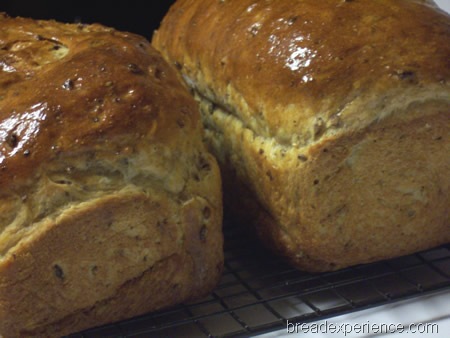
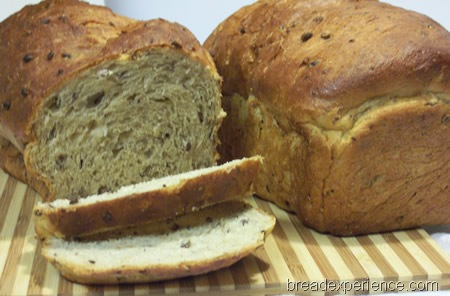
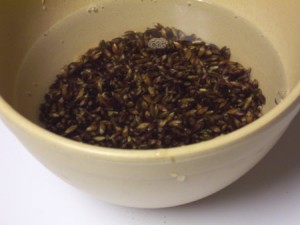
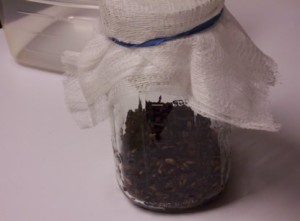
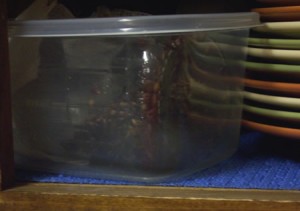
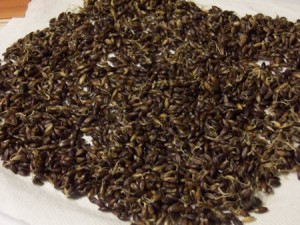
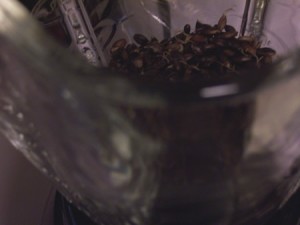
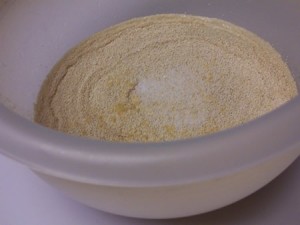
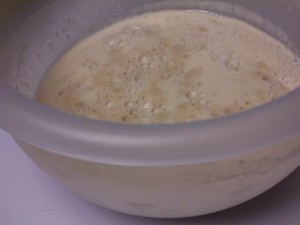
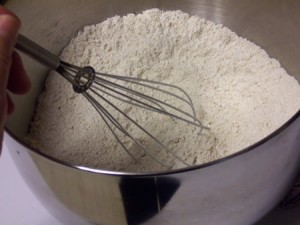
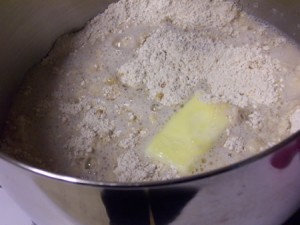
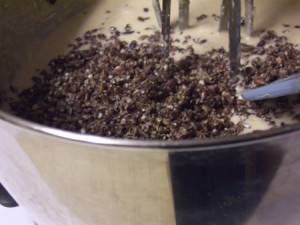
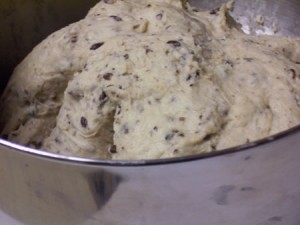
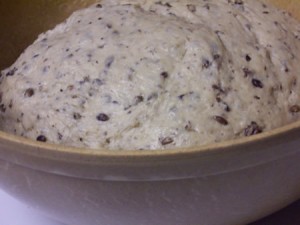
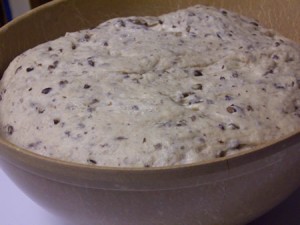
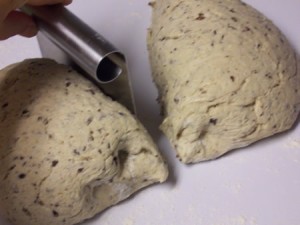
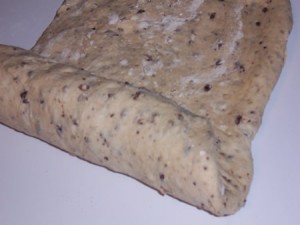
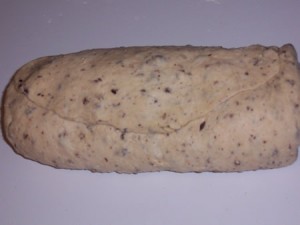
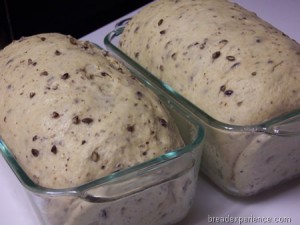
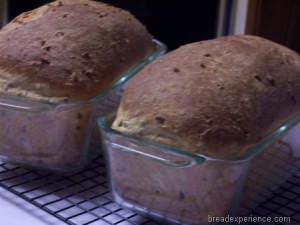
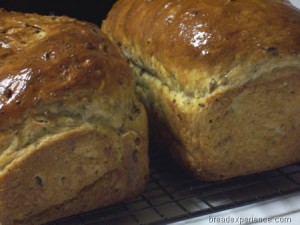
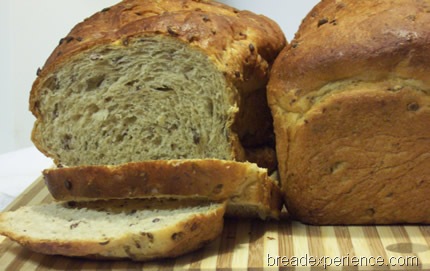
susies1955 says
So yummy looking. 🙂
Susie
Champa says
I am so making it. As soon as the bread that I baked yesterday gets over.
Stephanie Santos says
I just pulled some out of the oven. I subbed olive oil for the butter and nixed the wheat germ. I also threw it all in my bread machine on the dough cycle before shaping the loaves. Smells fantastic! Thanks for sharing the recipe!
Cathy W. says
Hi Stephanie! Sounds like you made some great substitutions. Thanks for your feedback!
Happy Baking!
Cathy
Naveed says
Your recipes r looking awesome. Am going to try this bread today. Except I didn’t have sprouted barely. But I would do exactly next time. I didn’t add honey either. I would like to have a bread of barely for diet purpose. Rest is same. Let’s see how it turns out to b.
Cathy says
Thanks for sharing. Do let me know how it turns out.